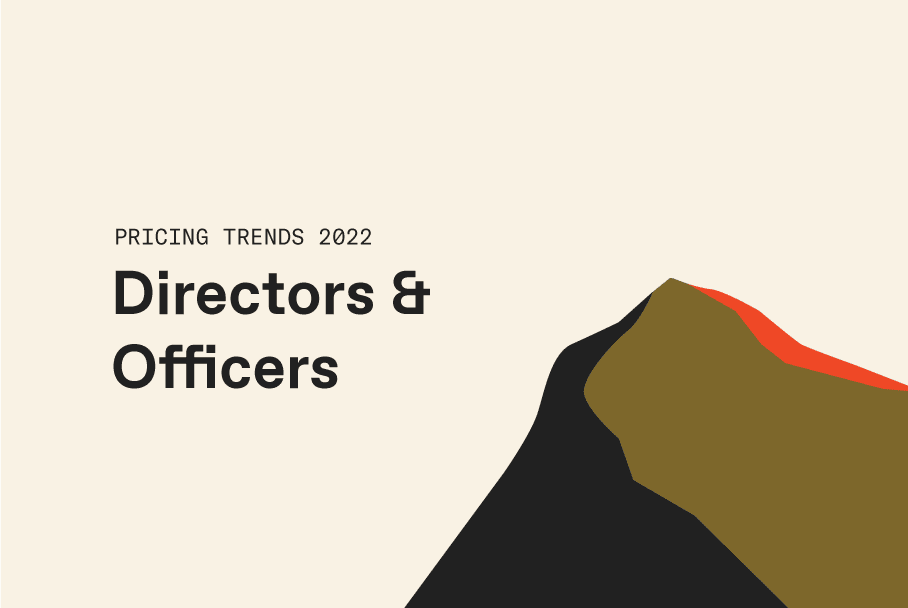Key Takeaways
Thanks to plenty of hard work and a dynamite team of employees, you have a successful startup. Now, you’re ready to offer an employee stock so they can really see their efforts pay off!
Employee Stock Ownership Plan (ESOP) is a type of employee benefit plan that’s usually offered with a 401(k). It accumulates company stock and holds it in accounts for employees until they retire or leave the company.
It’s easy to assume since the employees essentially become a class of shareholders, your Directors & officers (D&O) Insurance would protect you and the company from liability. However, D&O coverage typically excludes ESOP liability, rendering it inadequate for broad protection against fiduciary exposure.
Before you hit the “Go” button, let’s review ESOP risks and what insurance coverage will protect you, the company, and your employees the best.
What Are the Risks Associated with ESOPs?
While the payoff can be great, a lot of risks are associated with ESOPs. Following are a handful of the most common:
Highly Regulated
From the start of an ESOP, you must involve the Internal Revenue Service (IRS) by filing a Form 5309. As imagined, both the Employee Retirement Income Security Act (ERISA) and the IRS highly regulate ESOPs. Per IRS governing rules, the maximum plan contribution is typically 25% of pay. Although certain limits apply, these particular set of standards are pretty hard and fast—similar to those of a 401(k) plan.
Plus, it’s your job to communicate all ESOP standards and rules to your employees, which can get complicated at times. It’s best to work with a well-versed attorney as well as an experienced accountant to make sure all your Is are dotted, and Ts crossed.
Require Hefty Company Cash Flow
Despite ESOPs following many of the same rules as 401(k) plans, the company funds ESOPs entirely. As a result, companies often borrow money from the bank, seller, or both to contribute to the ESOP trust. This arrangement is otherwise known as a leveraged ESOP.
A risk associated with this particular aspect is that companies need enough cash flow to pay their ESOP loan debt. Also, when employees leave—either by retiring or resigning—companies need sufficient cash to buy back stock from the departed employee.
Needs to Maintain a 409A
Unlike a valuation determined by investors at launch time, a 409A decides the fair market of common stock. A qualified appraiser typically lands on the 409A valuation figure. When electing the ESOP route, a company must maintain their 409A.
Why? Mainly because an ESOP is only allowed to purchase reasonably valued stock. Although this hoop seems legit, it’s one more hoop nonetheless. However, a company may need to keep jumping through it. After raising additional venture financing, the previous 409A becomes outdated, and the company will need a new valuation.
Must Be Offered to Everyone
ESOPs are the epitome of the “play fair” rule preached by parents and teachers alike. Essentially, a company has to offer it to all of its employees. Plus, a significant number of what are known as non-highly compensated employees must participate in the plan. Otherwise, the program doesn’t qualify for specific tax advantages.
Increases Fiduciary Responsibilities
In any plan covered by ERISA, the exact roles and duties of involved parties often confuse people. When it comes to the broader responsibility of an ESOP company, people’s head may spin with uncertainty.
What’s crucial to remember is that Plan Administrators, as the named fiduciary, have fiduciary liabilities. A Plan Administrator is a legal position reporting benefits to the IRS and employee participants. Their personal assets are on the line, not unlike the duty held by Directors and Officers.
Claim Are Often Costly
Class action lawsuits are no drop in the bucket. Instead, these claims can cost a company significantly. Unfortunately, a decrease in share value—claimed as a breach of fiduciary duty—can quickly lead to a class action lawsuit. Some drop in share value is an expected part of any leveraged ESOP transaction, and yet, numerous claims have erupted across the country.
Also, funding legal defense to resolve these lawsuits can cost substantially. As mentioned, the fiduciaries are typically held personally liable under ERISA.
Lastly, another aspect to consider is that ESOPs are costly to start up. Setting up a trust will ding you anywhere from $15K to $100K and more. This approach isn’t something any company wants to dive into unaware.
D&O Insurance Benchmarking
How Fiduciary Liability Insurance Can Help
Although many of these ESOP requirements appear challenging and nearly impossible to meet, they are manageable. Giving your employees a financial stake in your company doesn’t mean handing over total control, after all.
One way to protect your company and its employees is with fiduciary liability insurance. This particular policy works to safeguard against fiduciary-related claims. ERISA or any federal statute does not require it. However, it’s incredibly beneficial if a claim is filed against the policyholder.
Not only does fiduciary liability insurance cover the cost of legal defense, but it also covers financial losses. Typically, financial losses to the plan occur due to breach of fiduciary duty, errors, or omissions.
It’s crucial to update your valuations frequently as insurance carriers review the company’s valuation and financial stability regularly. In short, ESOPs must be managed properly and effectively for a carrier to “make good” for the company.
Land the Right Policy
ESOPs often fall into a unique little crack of their own when it comes to coverage. Most of the time, your company will carry liability coverage on other policies, but fiduciary liability is excluded or not adequate.
Errors & omission (E&O) insurance covers your relationship with clients, not employees specifically—and outright excludes fiduciary liability. The same goes for D&O, and the ever-popular general liability policy is far too broad to provide enough coverage.
However, you can typically purchase a fiduciary liability policy alongside a D&O policy. As mentioned, D&O insurance alone is inadequate protection against fiduciary exposure. When you team up your policies, though, you can rest easy that you, the company, and its employees are fully protected.
As your company evolves, it can be tricky determining the coverage you truly need. Founder Shield specializes in knowing the risks you face at each stage of development, and we work to make sure you have adequate protection. Feel free to reach out to us, and we’ll walk you through the process of finding the right policy for you.
Insurance Rebuilt, End-to-End












